Themed collection ChemComm Community – Dedicated Authors

Strategies to quench quantum tunneling of magnetization in lanthanide single molecule magnets
Various strategies to quell QTM effects in Lanthanide SMMs were discussed. These include the role of (i) symmetry, (ii) super-exchange coupling, (iii) direct exchange coupling, (iv) external stimuli, and (v) toroidal moments.
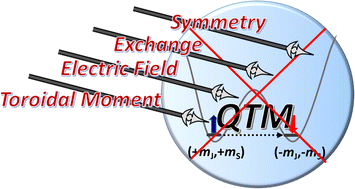
Chem. Commun., 2023,59, 3206-3228
https://doi.org/10.1039/D2CC06041H
Crystalline chalcogenidometalate-based compounds from uncommon reaction media
The synthesis of crystalline chalcogenidometalate-based compounds obtained in uncommon reaction media—in particular ionic liquids, surfactants, or hydrazine—allows access to unusual architectures and functional chemical as well as physical properties.
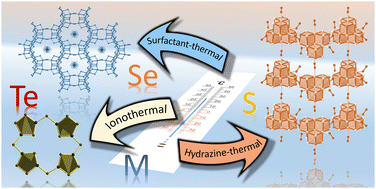
Chem. Commun., 2022,58, 11609-11624
https://doi.org/10.1039/D2CC04061A
High entropy metal chalcogenides: synthesis, properties, applications and future directions
In this perspective we assess the current status of high entropy metal chalcogenides, the synthetic techniques for them, the currently obtained properties and demonstrated applications and a discussion on the possible future directions.
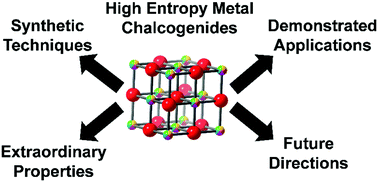
Chem. Commun., 2022,58, 8025-8037
https://doi.org/10.1039/D2CC01796B
Recent developments in the synthesis of bio-inspired iron porphyrins for small molecule activation
Nature utilizes a diverse set of tetrapyrrole-based macrocycles (referred to as porphyrinoids) for catalyzing various biological processes.

Chem. Commun., 2022,58, 5808-5828
https://doi.org/10.1039/D2CC00430E
Recent trends in organic cage synthesis: push towards water-soluble organic cages
This review highlights the recent trends in synthesis of organic cages including advantages and drawbacks of the different methodologies used. It also details the recent development in the field of water-soluble organic cages.
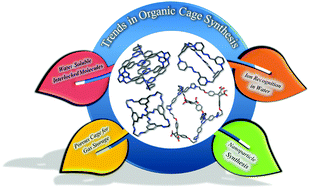
Chem. Commun., 2022,58, 5558-5573
https://doi.org/10.1039/D2CC01014C
Selective coordination of coinage metals using orthogonal ligand scaffolds
Orthogonal ligand scaffolds, consisting of soft and hard donor sites, are useful tools for the selective synthesis of heteronuclear coinage metal compounds, controlling their coordination geometry and tuning their photophysical properties.
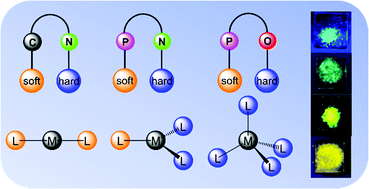
Chem. Commun., 2022,58, 5332-5346
https://doi.org/10.1039/D2CC01093C
Unlocking novel reaction pathways of diazoalkanes with visible light
In this feature article, the photolysis and dye-sensitized reactions of diazoalkanes are discussed and applications in organic synthesis are presented.

Chem. Commun., 2022,58, 2788-2798
https://doi.org/10.1039/D1CC06521A
Synthetic chiral molecular nanographenes: the key figure of the racemization barrier
Racemization barriers are the key! Molecular nanographenes can show a dynamic behavior which eventually controls their chiroptical and photophysical properties.
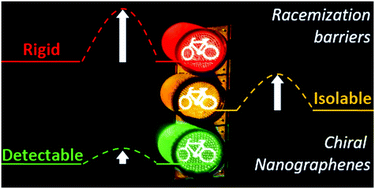
Chem. Commun., 2022,58, 2634-2645
https://doi.org/10.1039/D1CC06561K
Surface chemistry of metal–organic polyhedra
The rich surface chemistry of metal–organic polyhedra (MOPs) enables their functionalization and tuning their properties.
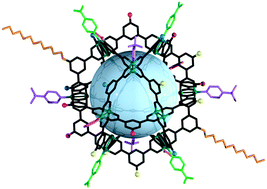
Chem. Commun., 2022,58, 2443-2454
https://doi.org/10.1039/D1CC07034G
Pursuit of next-generation glycopeptides: a journey with vancomycin
Next-generation vancomycin analogues developed through semisynthetic modifications tackle vancomycin resistance and complex infections.

Chem. Commun., 2022,58, 1881-1897
https://doi.org/10.1039/D1CC06635H
Precise surface control of cathode materials for stable lithium-ion batteries
Precise surface control of cathode materials for stable Li-ion batteries: materials design, kinetics control and stabilization mechanism.

Chem. Commun., 2022,58, 1454-1467
https://doi.org/10.1039/D1CC06183F
Cationic cyclization reactions with alkyne terminating groups: a useful tool in biomimetic synthesis
Cationic cyclization reactions are useful processes in organic synthesis and, particularly, the use of alkynes as the terminating groups offers wide synthetic possibilities because this group can serve as a precursor of different functionalities.
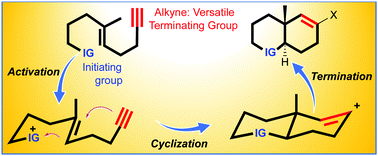
Chem. Commun., 2022,58, 1089-1099
https://doi.org/10.1039/D1CC05826F
Small-molecule fluorescent probes: big future for specific bacterial labeling and infection detection
In the last decade, small-molecule fluorescent probes brightened the bacteria and infections.
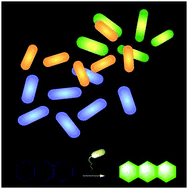
Chem. Commun., 2022,58, 155-170
https://doi.org/10.1039/D1CC05531C
Cationic π-extended heteroaromatics via a catalytic C–H activation annulative alkyne-insertion sequence
Herein, the recent progress of an annulative alkyne-insertion π-extension (AAIPEX) strategy to construct opto-electronically significant cationic polycyclic heteroaromatic compounds (cPHACs) is showcased.
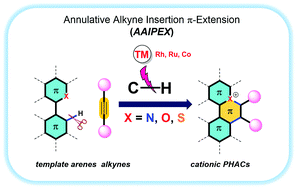
Chem. Commun., 2022,58, 133-154
https://doi.org/10.1039/D1CC05590A
Pillararene-based molecular-scale porous materials
This feature article discusses the synthetic methods, functionalisation approaches and application potential of pillararene-based molecular-scale porous materials.
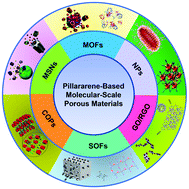
Chem. Commun., 2021,57, 13429-13447
https://doi.org/10.1039/D1CC06105D
Nucleic acid amplification-integrated single-molecule fluorescence imaging for in vitro and in vivo biosensing
We review the advances in the integration of single-molecule fluorescence imaging with nucleic acid amplification for in vitro and in vivo biosensing.
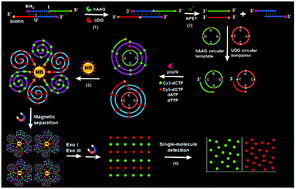
Chem. Commun., 2021,57, 13415-13428
https://doi.org/10.1039/D1CC04799J
From Raman to SESORRS: moving deeper into cancer detection and treatment monitoring
This article discusses the use of various Raman spectroscopy techniques and how they have been applied to different methods of detection for the diagnosis of cancer and in monitoring cancer treatment, with an outlook on how they can progress into a clinical environment.
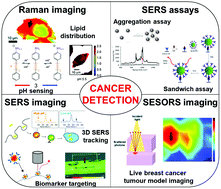
Chem. Commun., 2021,57, 12436-12451
https://doi.org/10.1039/D1CC04805H
Fluorescent probes for imaging bioactive species in subcellular organelles
Luminescent molecular probes and nanoscale materials have become important tools in biosensing and bioimaging applications because of their high sensitivity, fast response, specificity, and methodological simplicity.
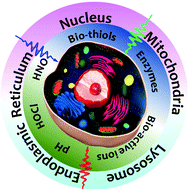
Chem. Commun., 2021,57, 12058-12073
https://doi.org/10.1039/D1CC04273D
Luminescent lanthanide–macrocycle supramolecular assembly
Macrocyclic compounds, including crown ether, cyclodextrin, cucurbituril and pillararene, bound to various specific guest molecules through various non-covalent interactions, can make the system multifunctional and endow system with intelligence.
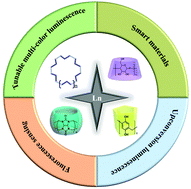
Chem. Commun., 2021,57, 11443-11456
https://doi.org/10.1039/D1CC04672A
N-Heterocyclic carbene complexes enabling the α-arylation of carbonyl compounds
The considerable importance of α-arylated carbonyl compounds, which are widely used in the pharmaceutical industry, has prompted efficient synthetic strategies for their preparation.
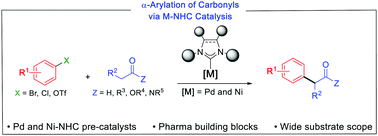
Chem. Commun., 2021,57, 4354-4375
https://doi.org/10.1039/D1CC00913C
C–CN bond formation: an overview of diverse strategies
Aim for cyanation: a comprehensive overview on various approaches on C–CN bond formation in arenes/heteroarenes by activated halides/pseudohalide, directed, non-directed, electro-catalyzed, photoredox-catalyzed, and radical approaches.

Chem. Commun., 2021,57, 2210-2232
https://doi.org/10.1039/D0CC07783F
Electrochemical non-enzymatic glucose sensors: recent progress and perspectives
This review summarizes recent advances in the development of electrocatalysts for non-enzymatic glucose detection. The sensing mechanism and influencing factors are discussed, and the perspectives and challenges are also addressed.

Chem. Commun., 2020,56, 14553-14569
https://doi.org/10.1039/D0CC05650B
Exploiting complexity to implement function in chemical systems
This feature article reflects a personal overview of the importance of complexity as an additional parameter to be considered in chemical research, being illustrated with selected examples in molecular recognition and catalysis.

Chem. Commun., 2020,56, 13273-13286
https://doi.org/10.1039/D0CC04170J
Intercalation and flexibility chemistries of soft layered materials
Intercalation and flexibility as two new chemical perspectives are introduced in soft layered materials for designing the structures and dynamic functions.
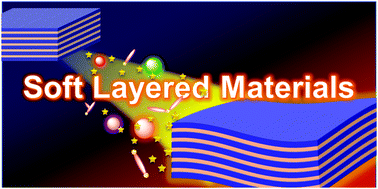
Chem. Commun., 2020,56, 13069-13081
https://doi.org/10.1039/D0CC05931E
Metal phosphonates incorporating metalloligands: assembly, structures and properties
This feature article summarizes the current status of metal–metalloligand phosphonates including the synthetic strategies, crystal structures and properties. Future challenges in this field are discussed.
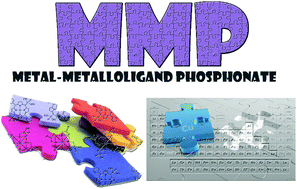
Chem. Commun., 2020,56, 12090-12108
https://doi.org/10.1039/D0CC03850D
One-dimensional electronic systems: metal-chain complexes and organic conductors
This feature article highlights and compares the structural and physical properties of typical examples of one-dimensional metal-chain complexes and organic conductors.

Chem. Commun., 2020,56, 10100-10112
https://doi.org/10.1039/D0CC04124F
High-resolution probing of early events in amyloid-β aggregation related to Alzheimer's disease
High-resolution structure elucidation of Alzheimer's amyloid-β oligomer is crucial to delineate its pathological phenotype. NMR provides atomic-resolution details of amyloid-β oligomer that could aid in the development of structure-based therapeutics.

Chem. Commun., 2020,56, 4627-4639
https://doi.org/10.1039/D0CC01551B
Gold and hypervalent iodine(III): liaisons over a decade for electrophilic functional group transfer reactions
Building on mechanistic perspective, the review intends to demonstrate how the uniqueness of Au-catalysts has realized a myriad of electrophilic functional group transfer reactions with the use of hypervalent iodine(III) reagents over the last decade.
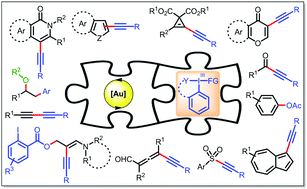
Chem. Commun., 2020,56, 2677-2690
https://doi.org/10.1039/D0CC00106F
Chiral optical scattering from helical and twisted silica nanoribbons
Helical and twisted silica nanoribbons, deposited in an in-plane direction and with a random orientation, on a quartz substrate showed chiral optical scattering, and helical nanoribbons had a g-factor of the order of 10−2 below 250 nm.
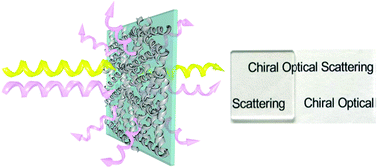
Chem. Commun., 2021,57, 12024-12027
https://doi.org/10.1039/D1CC04200A
Atom-efficient transition-metal-free arylation of N,O-acetals using diarylzinc reagents through Zn/Zn cooperativity
Operating via a special type of Zn/Zn′ cooperation, a new transition-metal free and atom efficient method of arylating N,O-acetals has been developed combining nucleophilic ZnPh2 with Lewis acidic Zn(C6F5)2.
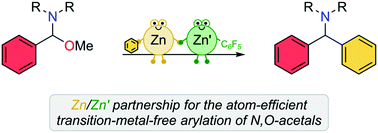
Chem. Commun., 2021,57, 8905-8908
https://doi.org/10.1039/D1CC04137A
About this collection
In this new and on-going feature, we are celebrating authors who have regularly published in the journal over their career, highlighting their loyalty and dedication to the journal. We extend our thanks to all those included for their support over the years.